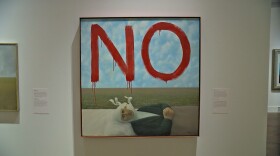San Diego Jewish Film Festival showcases the new documentary "The Adventures of Saul Bellow" on Nov. 10 in person at the David and Dorothea Garfield Theater and then online Nov. 11.
Israeli filmmaker Asaf Galay said there were three reasons he wanted to make "The Adventures of Saul Bellow. One, although he is Israeli he was born in Chicago where Bellow moved to at the age of nine and he was long associated with the University of Chicago.
Two, his father adored Bellow and Galay eventually read and loved the author (although Galay suggests only reading Bellow after accumulating some life experience so you can appreciate the insights). And three, while working on his documentary on Isaac Bashevis Singer, Galay discovered that Bellow was Singer's first translator.
Seven years after deciding to make a documentary on Bellow, Galay now has a film to share. The result is “The Adventures of Saul Bellow," a thoughtful and complex film about a writer whose life and work are inextricably intertwined. Bellow won the Nobel Prize for Literature, the Pulitzer, and three National Book Awards but his work was not without controversy and the film is not afraid to confront that.
"The people that were really near him felt really betrayed by him and really upset about him," Galay said from his home in Israel. "His children, his wives are very intelligent and seem to have a very good perspective. They know the good things about him. They know the difficult things."
And they share both of them in very honest and candid interviews. Galay confesses that it was sometimes difficult for him because he admired Bellow and did not always want to hear the bad things. But he includes a wide variety of perspectives on both the man and his work.
"It's part of the journey of the film that you hear more about him than when you just read his literature," Galay said. "I thought I was going to focus more on his humor. But then you hear other new issues and you say this is so contemporary, that I should deal with it. And so there are many voices in the film."
Voices that address accusations of racism and criticism about his often unflattering portraits of women. The opinions did not change Galay's appreciation for Bellow but did open his eyes.
"Now I have more knowledge. I understand better about the character that he's writing," Galay said. "I understand better what his "the philosophy" was. I understand better what he disliked and what I think what was wrong with his analysis of the future, but I just understand him better and deeper."
And viewers of the film will as well. Galay makes a point to highlight Bellow's writing so you can appreciate or be critical of his work. Making a documentary about a writer whose work sits flatly on a printed page is a challenge, explained Galay. With a filmmaker or visual artist you can show their work in a cinematically engaging manner. So Galay decided to put the words on the screen and have people read passages.
"I put a lot of the words, the sentences, the paragraphs of Saul Bellow, like you are reading it," Galay said. "It came from his books. You hear somebody reading that's not an actor. So it's only the words. Very quietly. I gave it [the words] the honor that it should have. And this was really important to me to give a lot of honor and respect to his words, to his sentence."
The film explores Bellow's work through literary commentary, personal reminiscences, criticism of his depiction of women and minorities, as well as through archive interviews with the author. The result is a portrait of a flawed individual and skilled writer.






